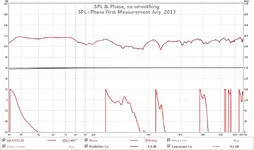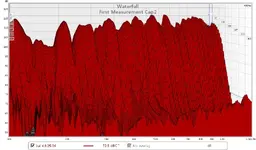Okay guys.. hang on! Not so fast...
Masnslick, you said, "...enter the dimensions in a mode calculator and the results show the room sucks. standing waves across the board." Emphasis ADDED.
Yes! Every single enclosure WILL HAVE STANDING WAVES. This is NOT a bad thing. They SUPPORT the sound in the room. Without them, you might as well be mixing in a field of flowers.
Now, when standing waves begin to create huge peaks and nulls it becomes a problem. That's why we need treatment so that these 'things' don't go on 'sloshing around' for ages. You want a couple of good bounces before they are absorbed. That's enough to give the sound IN the enclosure some support. Enclosures are rated by their volume and absorption to give a 'Schroeder frequency'. This is where sound begins to act like waves. Above the Schroeder frequency, sound will behave both like a wave and a ray.. this is called the transition region and above this is the Ray region.
All must be taken into account. Remember that all these things work together as a system.
Ideal absorption for a room to be used as a control room can be calculation using the following formula:
0.25*((room volume in cubic meters/100)^(1/3))
This is done for you on my room mode calculator spreadsheets - on my publications page. If you have difficulty or don't understand, please ask questions here or start a question thread so that everyone can benefit.
Cheers,
John




